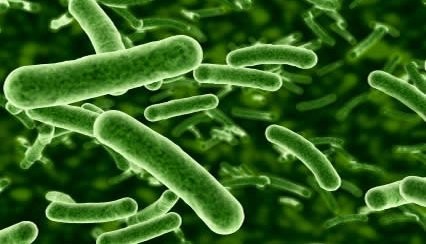
LACTOBACILLUS RHAMNOSUS GG EXHIBITS WIDE-SPECTRUM COAGGREGATION WITH BACTEROIDES SPECIES
Greg Kruse, Kathryn Bryant, Radhika Hulbatte, & Samuel Schotten. Faculty mentor Dr. Daniel Clemans
Abstract
The gastrointestinal tract of humans is host to a rich diversity of bacteria that undergo a complex set of interactions with each other and the human host. Bacteroides spp. and Parabacteroides spp. are among the most abundant occupants of the human large intestine. These species may interact with the probiotic strain, Lactobacillus rhamnosus GG ATCC 53103, a strain that has been shown to improve host immunity and nutrient metabolism and absorption. This study sought to characterize the coaggregation interaction of L. rhamnosus GG with wild and capsular type mutant B. thetaiotaomicron VPI 5482 and a collection of eighteen Bacteroides spp., as well as four Parabacteroides spp. In order to accomplish this, the study investigated the effect of culture medium and the nature of adhesin-ligand interactions. The Bacteroides spp. and Parabacteroides spp. were cultured in Tryptone, Yeast, Glucose (TYG) medium, while the L. rhamnosus was cultured in de Man, Rogosa, and Sharpe (MRS), Todd Hewitt (TH), and Brain-Heart Infusion (BHI) media. Protease treatment of each bacterial strain was used to characterize the directionality of adhesin-ligand interactions, and carbohydrate inhibition was used to characterize the nature of the adhesin. L. rhamnosus GG cultured in TH medium showed a broad spectrum of moderate to strong coaggregations with the Bacteroides spp., Parabacteroides spp., and B. thetaiataomicron mutant capsular types, whereas narrower spectrum moderate to strong coaggregations were shown from L. rhamnosus GG cultured in MRS, and the narrowest from that cultured in BHI. Exhibiting culture condition specificity, MRS and TH L. rhamnosus GG showed rather equivalent coaggregation with wild-type B. thetaiotaomicron, but each culture had a coaggregation with a specific capsular type mutant exclusive to that culture. The inhibition of L. rhamnosus GG coaggregation after protease treatment indicated that it contains the proposed adhesin in the interaction with Bacteroides spp. and Parabacteroides spp. However, initial testing with carbohydrate inhibition has shown only partial inhibition in very select interactions. This study suggests that L. rhamnosus GG coaggregation with Bacteroides spp. and Parabacteroides spp. is indeed dependent upon culture conditions. Characterization of the mechanisms mediating coaggregation interactions may allow for better understanding of inter-species interactions and the formation of biofilms in the human gut.
A poster presented at Microbiome Symposium at University of Michigan
http://microbe.med.umich.edu/about/events/microbiome-symposium